|
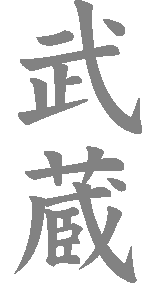
DAIMYO of
MUSASHI PROVINCE
Tokugawa
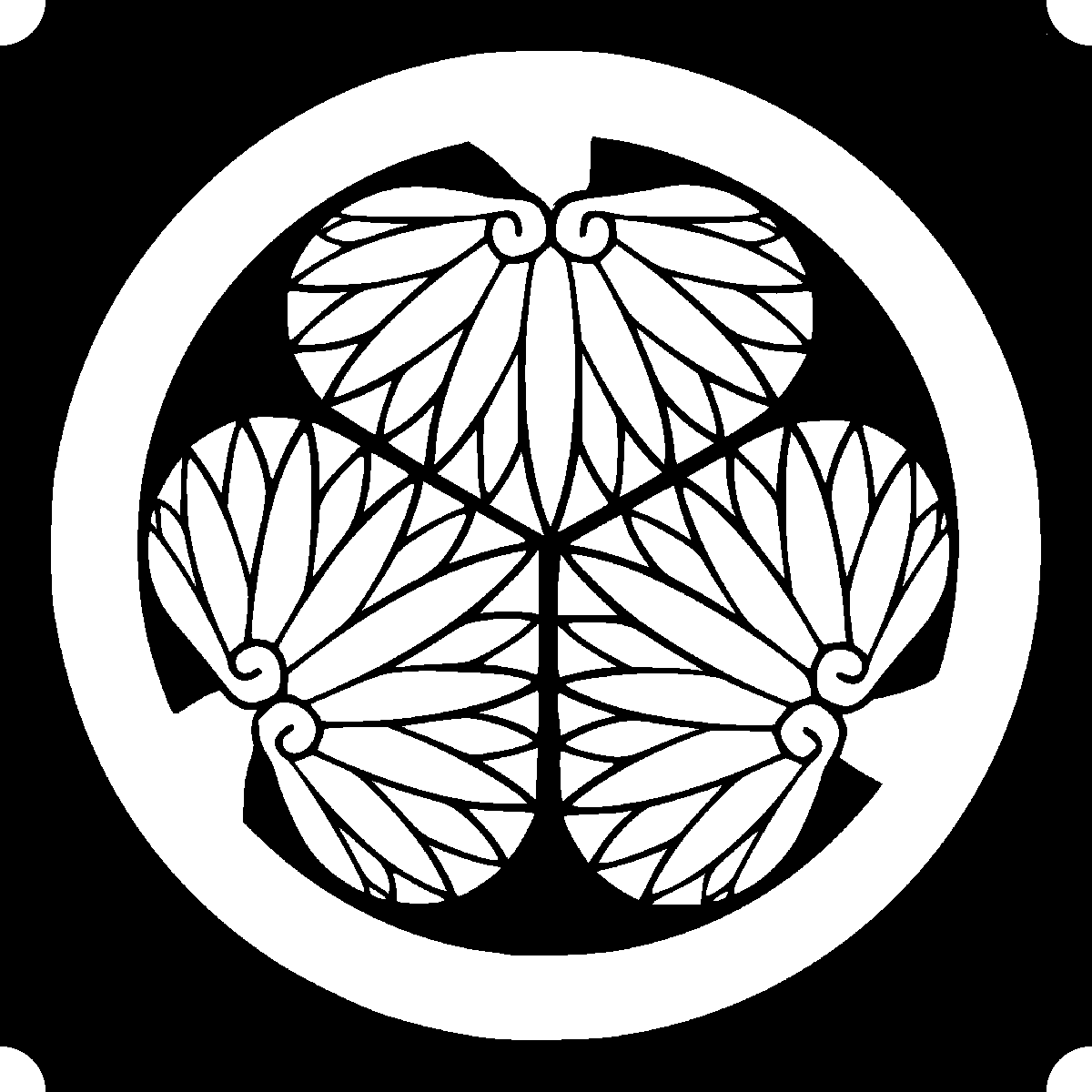

- Domain: Edo
- Stipend: 5,000,000 koku
- Class: Shogun
- Headquarters: Edo Castle (Flatland)
%20800x533.jpg)
%20800x543.jpg)
%20800x242.jpg)
.jpg)
.jpg)
Family descended from Nitta Yoshishige ( -1202), grandson of Minamoto
Yoshiie (Seiwa-Genji).
Succession
- Minamoto Yoshiie
- ...
- Yoshishige ( -1202)
- Yoshisue
- ...
- Arichika
- Chikauji
- ...
- Yasuchika (1369-1412)
- Nobumitsu (1390-1465)
- Chikatada (1418-1480)
- Nagachika (1442-1510)
- Nobutada (1489-1531)
- Kiyoyasu (1511-1536)
- Hirotada (1526-1549)
- Ieyasu (1543–1616) - 1st Tokugawa shogun (1603–1605)
- Hidetada (1579–1632, shogun 1605–1623)
- Iemitsu (1604–1651, shogun 1623–1651)
- Ietsuna (1641–1680, shogun 1651–1680)
- Tsunayoshi (1646–1709, shogun 1680–1709)
- Ienobu (1662–1712, shogun 1709–1712)
- Ietsugu (1709–1716, shogun 1713–1716)
- Yoshimune (1684–1751, shogun 1716–1745)
- Ieshige (1711–1761, shogun 1745–1760)
- Ieharu (1737–1786, shogun 1760–1786)
- Ienari (1773–1841, shogun 1787–1837)
- Ieyoshi (1793–1853, shogun 1837–1853)
- Iesada (1824–1858, shogun 1853–1858)
- Iemochi (1846–1866, shogun 1859–1866)
- Yoshinobu (1837–1913, shogun 1867– )
Notable Ancestors
4th son of Yoshishige. In the beginning of the 13th century he settled at
Tokugawa (Kozuke) and took the name of that place. He is often called Tokugawa
Shiro.
Son of Arichika and descended from Yoshisue in the 8th generation. He
witnessed the ruin of the Nitta in their war against the Ashikaga. Threatened
with death, he fled disguised as a bonze to the Mikawa province. Having
arrived at the village of Sakai, he became a domestic in the household of
Gorozaemon, the chief of the village, who obliged him to marry his daughter.
In 1367 he had a son, Tadahiro, who kept the name of Sakai and is the ancestor
of the family of that name. The following year, having lost his wife, Chikauji
went to the village of Matsudaira. There he married the daughter of Nobushige,
chief of the village, and again had a son, Yasuchika, born in 1359, who took
the name of Matsudaira. Chikauji is believed to have died in 1407, but the
documents of that epoch are not reliable and dates, as far back as the 16th
century, can be taken only approximately.
-
Tokugawa
Yasuchika (1369-1412)
Was in charge of the castle of Iwatsu, then of Okazaki (Mikawa), and
governor of the province.
-
Tokugawa
Nobumitsu (1390-1465)
Son of Yasuchika. He strengthened the authority of his family in the
province. He shaved his head and received the name of Izumi-Nyudo.
-
Tokugawa
Chikatada (1418-1480)
Son of Nobumitsu, was Shuri no suke. Some of his vassals, the Suzuki, the
Miyake, the Nasu, the Abe, and others, joined their forces and besieged him in
his castle of Iwatsu, but Chikatada completely defeated them. Soon after, he
shaved his head and took the name of Saichu.
-
Tokugawa
Nagachika (1442-1510)
Son of Chikatada. He fought Imagawa Ujichika, governor of Suruga, who
attempted to occupy Mikawa.
-
Tokugawa
Nobutada (1489-1531)
Son of Nagachika, resided at the castle of Anjo (Mikawa), and in the midst
of the civil wars, which were continuously waged about him, was able to retain
all his hereditary possessions.
-
Tokugawa
Kiyoyasu (1511-1536)
Son of Nobutada, was murdered at the age of 25 by one of his vassals, Abe
Masatoyo.
-
Tokugawa
Hirotada (1526-1549)
Son of Kiyoyasu, was under the tutorship of Abe Sadayoshi. Taking advantage
of his youth, his uncle Serata Nobusada sought to supplant him, but Sadayoshi
took Hirotada to Ise and interested Imagawa Yoshimoto in his cause, who
re-established him in his castle of Okazaki. In 1541 he married the daughter
of Mizuno Tadamasa, lord of Kariya, and the following year he had a son, who
was Ieyasu. In 1545, at the death of Tadamasa, the latter's son, Nobumoto,
made an alliance with the Oda of Owari, and Hirotada, repudiating his wife,
sent her back to her brother. War ensued between Hirotada and Oda Nobuhide. In
1547 he asked Imagawa Yoshimoto for help, and sent his son Ieyasu to him as
hostage, but Nobuhide succeeded in getting possession of the child and took
him to Nagoya. Hirotada marched against Nobuhide and defeated him, but he died
soon after in his castle of Okazaki.
-
Tokugawa
Ieyasu (1542-1616)
.jpg)
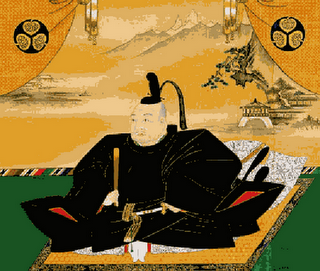
1st Tokugawa shogun, ruled from 1603 to 1605.
Born at the castle of Okazaki (Mikawa), he received the name of Takechiyo.
In 1547, his father having sought help from Imagawa Yoshimoto against Oda
Nobuhide, sent, as was customary, Takechiyo with fifty other young samurai as
hostages to Suruga. During the journey, a certain Norimitsu, Hirotada's vassal,
stopped the train and delivered Takechiyo into the hands of Nobuhide, who
placed him in custody in the Kato family of Atsuta (Owari). Nobuhide then
offered peace to Hirotada but on such hard conditions that the latter
preferred to continue the war, and Takechiyo was confined in the small temple
Tenno-bo, where he had to undergo many hardships, notwithstanding the
devotedness of O Cha no Tsubone. At the death of Hirotada in 1549, the prince
of Mikawa was in great perplexity. Peace had been concluded between the
Imagawa and the Oda, but Takechiyo always remained a hostage.
In 1554, at the age of 12, he for the first time put on a coat of arms. Two
years later, at the ceremony of the genbuku, he received the name of Motonobu.
In 1558 he married the daughter of Sekiguchi Chikanaga, vassal of the Imagawa,
and soon after received permission to return to his own province, where he
changed his name to that of Motoyasu. He was scarcely at Okazaki, when he
began to make preparations for war against Nobunaga, who was threatening
to attack Mikawa. Having regained possession of his two castles of Terabe and
Hirose, as well as the western portion of Mikawa province, he entered Suruga.
At that very time in 1560, Imagawa Yoshimoto was attacking Nobunaga, but was
defeated and killed at Okehazama (Owari). In 1561 Motoyasu, having forced his
uncle Mizuno Nobumoto to submit, after defeating him at Ishigase and at Kariya,
returned to Okazaki to settle the terms of peace with Nobunaga. He then
applied himself to restore order in his province, established the Bugyo, then
in 1565, in order to free himself from the Imagawa and to assert his
independence, he put the name Motoyasu (a character of which had been given to
him by Yoshimoto) aside and took that of Ieyasu, by which he was to be
henceforth known and under which he has become so renowned.
In 1567 he received the title of Mikawa no kami, then obtained permission
from the emperor to keep the name of Tokugawa for his own family, leaving that
of Matsudaira to the lateral branch of the Nitta and the Serata families. At
that time, he became acquainted with the famous Takeda Shingen and made an
alliance with him against Imagawa Ujizane. The latter, attacked by his
two foes, was routed and dispossessed of his domains, Shingen taking Suruga,
Ieyasu receiving Totomi. In 1570, leaving his son Nobuyasu at Okazaki, Ieyasu
went to Hikuma, which name he changed to Hamamatsu, and built a castle there.
His fame spread by degrees and all the former vassals of the Imagawa offered
him their services. At this time, he with 10,000 men aided Nobunaga to triumph
over the Ashikaga and Asai at Anegawa (Omi). Meanwhile, Takeda Shingen was
fighting the Hojo of Odawara, who were trying to take the province of Suruga
from him. He asked Ieyasu for help but was refused and war soon began. In 1571 Shingen entered Totomi and besieged the castles of Takatenjin, Yoshida,
Nire, etc. Uesugi Kenshin attacked Shinano, and Shingen had to face this new
enemy; but the following year, war recommenced between the two rivals, and
Ieyasu found himslf besieged in Hamamatsu. He sent to Nobunaga for help, and
the latter sent him a great body of men under the command of Sakuma Morinobu.
In the beginning of 1572, Shingen with 40,000 men was camping at Mikatagahara
and burned all the surroundings of the castle of Hamamatsu, but Ieyasu held
his position. To induce him to accept battle, Shingen retired to Iidani and
Ieyasu left his castle and camped at Mikatagahara. He was at once attacked and
defeated. Morinobu fled and Ieyasu was preparing for death, when one of his
vassals, Natsume Masayoshi, whom he had left at Hamamatsu, arrived in haste, and
obliged his lord to return to the castle. With a small body of faithful
samurai he boldly met death, a sacrifice to his master's welfare. Having
returned to Hamamatsu, Ieyasu, on the following night, made a sortie with 400
men, and attacked the enemy at daybreak. The vanquished of the preceding day
came to his rescue, and defeat was soon changed into a decided victory.
The following year in 1573, war was resumed, but was interrupted for some
time by Shingen's death. Katsuyori, his son, renewed the struggle and in 1574 invaded
Totomi. This time also, Ieyasu, with Oda Nobunaga's help, defeated his
enemy at Nagashino. A truce followed which lasted for several years, during
which time both parties prepared for a final effort.
In 1579 the eldest son of Ieyasu, Nobuyasu, was accused of having friendly
relations with the Takeda, whereupon his father called him to Hamamatsu, and
after an investigation, invited him to commit harakiri. In 1581, war began and
Ieyasu took the castle of Takatenjin from Katsuyori. The following year, an
expedition conducted by Nobunaga and Ieyasu was directed against Katsuyori. It
ended with the ruin of the Takeda at Tenmoku-zan (Kai), and Ieyasu received
the Suruga province. He then paid a visit to Nobunaga in his castle of Azuchi,
and Akechi Mitsuhide was chosen to receive so high a dignitary. From here, he
went to Kyoto and thence to Osaka, in which latter city he heard of the murder
of Nobunaga. Not having enough troops with him to oppose Mitsuhide, he
hastened to Mikawa, gathered a small army and marched towards Kyoto, but at
Atsuta, he heard of the defeat and death of Mitsuhide. He returned to Okazaki
and did not take part in the campaign of Shizugatake (1583). The following
year, he accepted the advances made by Oda Nobuo and joined him to fight
Hideyoshi. The army of the latter was defeated at Komaki-yama (Owari), but
soon after, Ieyasu deserted his ally, and made peace with the future Taiko,
confirming it by his marriage with Asahi no kata, Hideyoshi's daughter. In the
following years, he busied himself with the administration of his domains.
In 1590 Ieyasu resumed his military life in a campaign against the Hojo of
Odawara. In this expedition he gained the eight provinces of Kanto, but not
those of Shimotsuke and Awa. He then had a revenue of 2,557,000 koku, which
enabled him freely to distribute domains among those who for thirty years had
been fighting in his interests. As his residence, he chose the small port of
Edo, in Musashi, and on the ruins of the fortress built there in the 15th
century by Ota Dokan, he erected an immense castle. He found a pretext for not
taking part in the Korean expedition. In 1598 Hideyoshi, who had chosen him
as one of the Go-Tairo, called him near his person. When on the point of
death, he ordered Ieyasu to lead the army from Korea back, and most
particularly entrusted to him the guardianship of his son Hideyori. After the
Taiko's death, Ieyasu installed himself in the castle of Fushimi and began to
rule as sole master. Troubles soon rose between him and the great daimyo who
accused Ieyasu of usurping the power of his ward. The leaders of this faction
were Maeda Toshiie and Ishida Kazushige. Ieyasu, through much cunning, was able
to bring Toshiie to his side. But many daimyo returned to their domains,
plainly showing their dissatisfaction. Among them were Ukita Hideie, Mori
Terumoto, Uesugi Kagekatsu, etc. The last mentioned, in particular, so openly
refused to recognize the authority of Ieyasu, that the latter soon opened a
campaign against him. He had scarcely left Fushimi, going north, when his
enemies issued a proclamation accusing him of 13 serious charges and calling
to arms all the vassals that remained faithful to the Taiko. Ieyasu's
adherents, however, were not idle, and prepared for battle. Thus, at very short
notice, Japan was divided into two camps.
The war began in August 1600. Hosokawa Fujitaka, Ieyasu's vassal, was
attached in the castle of Tanabe (Tango), and resisted heroically. Torii
Mototada defended Fushimi well, but the assailants took the castle and
Mototada died in battle. Meanwhile, Fukushima Masanori and Ikeda Terumasa,
allied to the Tokugawa family, marched toward the East and occupied the
castles of Kiyosu and Gifu. There, Nobunaga's grandson, Hidenobu, whom Ishida
Kazushige had won to his party, was taken prisoner and confined to Koya-san.
Ieyasu however had come to Oyama (Shimotsuke), where he learned what had
happened since his departure. He hastened to retrace his steps and gathering
an army of 80,000 men, encountered Kazushige's army in Mino, 130,000 strong.
On October 21, 1600, a battle took place at Sekigahara where Ieyasu gained a
complete victory over his enemies and 40,000 heads of the enemy were the
trophy of the day. This success gave Ieyasu undisputed authority, which he
used most arbitrarily. Of his former adversaries, the principal, Ishida
Kazushige, Konishi Yukinaga, Ankokuji Ekei, etc. were beheaded at Kyoto; Ukita
Hideie, Oda Hidenobu, Chosokabe Morichika, Maeda Toshimasa, Masuda Nagamori,
Tachibana Muneshige, Niwa Nagashige, and others were deprived of their
domains; others again, such as Mori Terumoto, Uesugi Kagekatsu, Satake
Yoshinobu, Akita Sanesue, etc. who submitted to the victor, found their
revenues considerably reduced. His adherents, the Kobayakawa, Date, Kato,
Mogami, Asano, Fukushima, Gamo, Ikeda, Kuroda, Hosokawa, Todo, Tanaka,
Yamanouchi, Okudaira, Ii, etc. received very large domains, and the
distribution of fiefs was made in such a manner that the last to submit to the
new power (tozama daimyo) always found themselves near one or several of the
ancient vassals (fudai daimyo), who watched them so as to prevent even the
possibility of a rebellion.
Ieyasu, now securely established in power, showered greater honors on the
person of the Emperor than had thus far been accorded to him, but reserved the
executive power to himself. Installed in Fushimi, he summoned the learned
Fujiwara Seika and Hayashi Doshun to help him with their sagacity in the
administration of affairs. He ordered the maps of the provinces and districts
to be revised: brought the ancient books of the Ashikaga-gakko and
Kanazawa-bunko, to Fushimi or to Edo, and had the most important and rarest
rewritten. It was he too who revived the edicts against Christianity and
increased their severity. It was only in 1603 that he received from the
Emperor Go-Yozei, the title of Sei-i-tai shogun and those connected with it,
such as the titles of Genji no choja, Jun'a-in, and Shogaku-in no Betto. Two
years later, he abdicated in favor of his son Hidetada, then 26 years old, his
principle motive being to secure the succession of his high dignity to his
family. He retired to Sunpu (Shizuoka), and whilst taking an active part in
the government, he devoted his leisure to literature and poetry.
In 1611 Ieyasu went to Kyoto and had an enterview with Hideyori, to whom he
betrothed his granddaughter, Sen-hime, daughter of the Shogun Hidetada.
Hideyori, having become of age, was, notwithstanding all the precautions taken
by Ieyasu and the surveillance exercised over him, taught by his surroundings
and in particular by his mother Yodo-gimi, to look upon Ieyasu as the usurper
of his power. Thus the relations between him and the Tokugawa became steadily
more strained, and the latter only waited for an opportune moment to get rid of
him. Ieyasu induced Hideyori to rebuild the Hoko-ji temple at great expense.
It had been previously built by Hideyoshi but was destroyed an earthquake in
1596. Ieyasu well knew that the money used in this pious work, would not be
employed in recruiting soldiers. When the temple was finished, Hideyori
ordered a large bell to be cast, and invited Ieyasu to the opening ceremony.
Now, it happened that in the inscription placed on the bell, the two
characters of the name of Ieyasu were employed, separated one from the other.
The ex-Shogun affected to be insulted at this imprecation against him,
bringing down the curse of heaven. He stopped the proceedings of the feast,
asked an explanation and even wanted to force the emperor to suppress the
ill-omened inscription. Hideyori refused to submit to such unreasonableness,
and, some time after, Ieyasu and Hidetaka, at the head of 50,000 men, were
camping under the walls of Osaka. The castle was well fortified, and
Hideyori's generals Ono Harunaga, Sanada Yukimura, Goto Mototsugu, etc. had
assembled 60,000 samurai, mostly ronin of ancient daimyo, dispossessed by
Ieyasu. Every man was determined to sell his life dearly. After some doubtful
encounters, Ieyasu sent O Cha no Tsubone to Yodo-gimi, and through her
intermediary, peace was restored, Hideyori agreeing to dismiss his troops and
to fill the moats of the castle of Osaka. Thus ended what is known in history
as the winter campaign of Osaka (Osaka fuyu no eki), because it took place in
the last months of the year 1614.
Ieyasu had scarcely returned to Sunpu, when new difficulties arose.
Hideyori consented to the demolition of the exterior defenses, and to the
filling up of the moats, but he asked that his soldiers should be recognized
as regular troops, which request met with a flat refusal. He then proposed to
exchange his provinces of Settsu, Kawachi, and Izumi for those of Awa, Sanuki,
and Iyo, in Shikoku. Ieyasu offered him those of Shimosa, Kazusa, and Awa (Tokaido),
but to accept this proposition would have been putting himself completely into
the power of the former. Hideyori refused and the two parties again prepared
for war. In May 1615 Ieyasu gathered his army and one month after, despite
the bravery shown by the besieged garrison, Osaka fell. Hideyori and Yodo-gimi
perished in the conflagration of the castle. This second siege is called the
summer campaign of Osaka (Osaka natsu no eki). The power of the Tokugawa was
now supreme and secure for a long period.
Before returning to Suruga, Ieyasu promulgated Regulations for the samurai
(Buke-hatto) in 13 chapters, taken from the Joei-shikimoku and the
Kenbu-shikimoku Codes. He likewise established the Kuge Code (Kuge-hatto) in
17 chapters after having consulted the Kanpaku Nijo Akizane on the matter. In
the beginning of 1616, soon after his return to Sunpu, Ieyasu fell ill. He
received the title of Dajo-daijin from the Emperor, but in the month of May,
departed this life at the age of 74. Buried temporarily at Kuno-san, near
Shizuoka, in the following year his body was carried with great solemnity to
Nikko, where a magnificent temple was erected in his honor. He received the
posthumous name of Toshogu.
Ieyasu was certainly a genius. He was a skilful warrior and a shrewd
politician. He finished the work of pacifying the country, a work begun by
Nobunaga and Hideyoshi, and endowed it with a powerful organization, securing
the power to his own family for the next two-and-a-half centuries.
-
Tokugawa
Hidetada (1579-1632)
%20626x599.jpg)
2nd Shogun of the Tokugawa family, from 1605 to 1622.
3rd son of Ieyasu, was born at the castle of Hamamatsu, and at the age of
10, was sent to Kyoto to stay with Hideyoshi. In 1600, he accompnaied his
father in the projected campaign against Uesugi Kagekatsu and went as far as
Utsunomiya but hearing that Ishida Kazushige had risen in arms, he marched
South through Tosando, but allowed himself to be delayed at the siege of Ueda
(Shinano) for 15 days and arrived in Mino after the battle of Sekigahara.
Ieyasu, in his anger, refused to receive him, but at the intervention of Honda
Masazumi consented to give him audience.
In 1605, Hidetada was named Shogun. He aimed at maintaining and developing
his father's policy. He took part with him in the two sieges of Osaka
(1614-1615). In 1620, his daughter Kazuko married the emperor Go-Mi-no-o. He
continued to persecute the Christians and under the most severe penalty
forbade any Japanese to go out of the country. It is he who stopped commercial
relations with all foreigners except the Dutch, Chinese and Koreans.
In 1622, Hidetada abdicated the shogunate in favor of his son Iemitsu and
died ten years later, at the age of 53 years. He was buried in the temple
Zojo-ji, at Shiba (Edo) and received the posthumous name of Taitoku-in.
-
Tokugawa
Iemitsu (1603-1651)
%20736x600.jpg)
3rd Tokugawa Shogun, from 1622 to 1651.
Eldest son of Hidetada, he was educated by Naito Tadashige. He became
Shogun at the age of 19, when his father abdicated, and devoted all his time
to the study and perfecting of the government methods introduced by Ieyasu. He
closed the country entirely to all foreign commercial transactions; in 1636,
forbade the building of ships which would permit of long voyages; in
1638, by a cruel massacre suppressed the Shimabara insurrection; in 1640, put
to death the Macao ambassadors who had come to ask for liberty of commerce;
confined the Dutch who were allowed to pursue commerce with the Japanese to
Deshima (Nagasaki); bore a blind and ferocious hatred to Christianity and
destroyed it by a fierce persecution; made the law (Sankin-kotai) which
obliged the daimyo to reside alternately at Edo, and in their domains, in
which latter case they were obliged to leave their wife and children as
hostages at Edo. He was a protector of Buddhism and Confucianism. For the
former, in 1626 he built the Kanei-ji at Edo, and in 1634 the Eisho-ji at
Kamakura. He erected a temple in honor of Confucius and protected the learned
Hayashi Doshun, Nakae Toju, etc. In 1620, his sister Kazuko had been married
to the emperor Go-Mi-no-o, and from this union was born a daughter (Myosho-tenno)
who was raised to the throne at the age of 7. Thus, Iemitsu's influence was
great both at Kyoto and at Edo. To prevent any attempt of insubordination on
the part of the Imperial Court, he required that a prince of royal blood
should be always at the head of the Ueno (Edo) and Nikko temples, whom he was
ready to oppose to the legitimate sovereign should he prove troublesome.
By all these maneuvers, Iemitsu brought the government of the Shogun to the
highest degree of power. He died at the age of 47 and was buried at Nikko
where a magnificent temple was erect to his memory. His posthumous name is
Taiyu-in. At his death, ten of his most faithful subjects killed themselves (junshi);
among these were: Hotta Masamori (daimyo of Sakura), Abe Shigetsugu (daimyo of
Iwatsuki), Uchida Masanobu, Saegusa Moriyoshi, Okuyama Yasushige, etc. At the
same time, more then 3,700 maids of honour were dismissed from the Palace, and
of this number, over 100 shaved their heads and embraced the religious life (ama).
-
Tokugawa
Ietsuna (1639-1680)
%20631x600.jpg)
4th
Tokugawa Shogun, from 1651 to 1680.
Eldest
son of Iemitsu, and succeeded his father at the age of 12. In the year of his
accession to the shogunate, he repressed the rebellion of Yui Shosetsu and
Marubashi Chuya. Ietsuna's ministers were: Sakai Tadakiyo, Matsudaira
Nobutsuna, Ii Naozumi, etc. They continued to govern according to the manner
of Iemitsu. He forbade suicide (junshi) at the death of a master and
prohibited any translation of European works and any writing concerning the
government, Edo morals, etc. We need not wonder therefore at the great number
of authors who were imprisoned or banished during his reign.
Ietsuna
died at the age of 41, and as he had no children, his brother Tsunayoshi
succeeded him. He was buried in the Kanei-ji (Ueno) and received the
posthumous name of Gen-yu-in.
-
Tokugawa
Tsunayoshi (1646-1709)
.jpg)
5th
Tokugawa Shogun, from 1680 to 1709.
4th
son of Iemitsu, he in 1661, received the fief of Tatebayashi (Kozuke --
350,000 koku), and was called to succeed his brother Ietsuna who died without
progeny. He was at that time 34 years old. He was a patron of letters and
sciences, encouraged the military studies, worked at the reform of the
calendar, founded schools, protected artists, etc. The finances being in a bad
condition, he sought to improve affairs by altering the value of money and by
awarding land to the hatamoto instead of giving them a pension in rice. These
measures wrought a notable increase in the prices of all necessaries of life
and occasioned general dissatisfaction. Tsunayoshi had acted on the advice of
Yanagisawa Yoshiyasu, and on representations made by the Kanjo-bugyo Ogiwara
Shigehide. At that time, 30 million koku composed the revenues of the whole
Empire; of which 23 million belonged to the daimyo, 3 million to the temples
and hatamoto, and the remaining 4 million to the shogunate. The last sum, from
which 150,000 koku were deducted, being the allowance made to the Court of
Kyoto, could certainly not suffice because of the prodigality of Tsunayoshi,
who had to find divers expedients to increase his finances. Owing to the
influence of the bonzes, he, under the strictest penalty, forbade the killing
of any living being, and had places of refuge erected for disabled or infirmed
horses and dogs. Examples of the inhuman execution of this law are not
wanting; thus, in 1686, a vassal of the daimyo Akita, having killed a swallow
was put to death and his children sent into exile.
In
1704, Tsunayoshi, having no children, adopted his nephew, Tsunatoyo, son of
Tsunashige, who took the name Ienobu. The fief of Fuchu (Kai), which he
possessed up to that time, passed to Yanagisawa Yoshiyasu, who then was
continually rising in favor. Abusing the influence he had acquired over the
mind of the weak and aged Shogun, Yoshiyasu asked that the province of Suruga
be added to the fief which his son Yoshisato was to inherit. Tsunayoshi
consented, but before placing his seal on the official document confirming the
donation, his wife Mi-daidokoro, daughter of the ex-Kanpaku Takatsukasa
Fusasuke, exasperated that such an abnormal favor should be granted, stabbed
the Shogun and killed herself. Tsunayoshi was then 63 years old. He was buried
at the Kanei-ji (Ueno) and received the posthuous name of Joken-in.
-
Tokugawa
Ienobu (1662-1712)
%20800x596.jpg)
6th
Tokugawa Shogun, from 1709 to 1712.
Son
of Tsunashige, in 1704, he was daimyo of Fuchu (Kai -- 350,000 koku) when his
uncle Tsunayoshi chose him as heir. He then changed his name Tsunatoyo to
Ienobu, and five years later received the title of Shogun at the age of 47
years. The first act of his reign was to abrogate the severe laws enacted by
his predecessors against those who killed animals or caused them to suffer. On
the petition of Arai Hakuseki, he suppressed the custom which obliged the
greater number of the princes of the Imperial family to become bonzes and the
princesses to become ama, and he allowed them to marry. He recoined the
altered pieces of money that Tsunayoshi had introduced and gave them their
former value. Ienobu took the famous and learned Arai Hakuseki with him from
Kai, for he loved to follow his advice. He died at the age of 50, was buried
in the Zojo-ji (Shiba) and received the posthumous name of Bunsho-in.
-
Tokugawa
Ietsugu (1709-1716)
%20600x600.jpg)
.jpg)
7th Tokugawa Shogun, from 1713 to 1716.
Son of Ienobu, succeeded him at the age of 4. It was in his name that a law
was enacted, which obliged the daimyo of Kyushu to burn any European vessel
that should land on their coasts and to kill the crew. Ietsugu died when but 7
years old, was buried in the Zojo-ji (Shiba) and received the posthumous name
of Yusho-in.
-
Tokugawa
Yoshimune (1677-1751)
.jpg)
8th
Tokugawa Shogun, from 1716 to 1745.
3rd
son of Tokugawa Mitsusada, of the Kii branch, he in 1697, received a revenue
of 30,000 koku at Nibu (Echizen) and at the death of his two elder brothers,
he became daimyo of Wakayama and chief of the Kii branch in 1705. At the death
of Ietsugu, he was chosen as his successor, and though he refused the dignity
of Shogun three times, he was obliged to submit to the decision of the family
council. He was the 39 years old. When in power, his first endeavor was to
extirpate abuses and to bring about the happiness of his people. He entrusted
the affairs of justice to the upright Ooka Tadasuke; made researches for the
tombs of the ancient emperors and had them repaired; ordered boxes to be
placed in the cities of Edo, Kyoto and Osaka, to receive the petitions and
complaints of the common people; repressed luxury and favored economy;
distributed a book on popular medicine for the benefit of the poor; introduced
the growing of sweet potatoes and the making of sugar; established a trade
system for the mutual benefit of the provinces, etc. He was also a protector
of the learned, removed the prohibition to read or translate European books,
and personally supervised the printing of a great number of books, etc. In
short, he became so popular by his wise administration that the people called
him Kome-shogun (the Shogun of the rice). Yoshimune however did not revoke the
laws closing the country to strangers, nay he redoubled the watchfulness and
did much for the protection of the coasts. In 1729, a certain Ten-ichi-bo, a
native of Wakayama, pretending to be the son of Yoshimune came to Edo to
assert his rights but was arrested, convicted of falsehood and put to death.
At the age of 68, Yoshimune abdicated in favor of his son Ieshige. He died six
years later, was buried at the Kanei-ji (Useno) and received the posthumous
name of Yutoku-in.
-
Tokugawa
Ieshige (1712-1761)
.jpg)
9th Tokugawa Shogun, from 1745 to 1760.
Eldest son of Yoshimune, whom he succeeded at the age of 34. He was of a
weak constitution, and left the administration of public affairs to his
ministers. In 1758, the councilors of the Shogun began to fear the doctrines
taught by Takenouchi Shikibu at Kyoto, wherefore he was imprisoned and 17 kuge
were degraded or exiled. Ieshige abdicated at the age of 48, in favor of his
son Ieharu, and died the following year. He was buried in the Zojo-ji (Shiba),
and received the posthumous name of Junshin-in.
-
Tokugawa
Ieharu (1737-1786)
.jpg)
10th
Tokugawa Shogun, from 1760 to 1786.
Eldest
son of Ieshige, whom he succeeded at the age of 23, he ordered Dutch books to
be translated and encouraged letters and science. During his administration,
in 1767, Yamagata Daini and Fujii Umon were beheaded and Takenouchi Shikibu
exiled for having proclaimed the authority of the Emperor to the prejudice of
that of the Shogun.
Ieharu
died at the age of 50 and his son Iemoto having died before him, a successor
was chosen in the Hitotsubashi branch. He was buried in the Kanei-ji (Ueno)
and received the posthumous name of Shinmei-in.
-
Tokugawa
Ienari (1773-1841)
.jpg)
11th
Tokugawa Shogun, from 1786 to 1837.
Son
of Hitotsubashi Harunari. In 1781 was chosen by the Shogun Ieharu to be his
heir, and was only 15 years old when he succeeded him. In 1789, troubles
occurred in the island of Ezo but were repressed by Matsumae Michihiro. This
is the last revolt of the Ebisu mentioned in history. During the rule of
Ienari, the foreign powers again renewed their efforts to enter into
communication with Japan: Russia in 1792-1798-1804-1811-1814; England in
1797-1801-1803-1808-1810-1813-1818-1824; America in 1797-1806-1837; but all
advances were met wtih a refusal. The Shogun ordered the daimyo of the North
to keep a good watch on the coasts and to defend them. Forts were constructed
in different parts of the country, communications with Annam and Luzon were
interrupted, and the country was again secluded more than ever from the
outside world. The famous Matsudaira Sadanobu reformed the regulations of the
army of the marine, obliged the hatamoto to pass examinations on military
affairs, personally inspected the coasts, etc. In 1827, Ienari received the
title of Dajo-daijin; he is the only one who bore that title whilst Shogun. In
1837, Oshio Heihachiro revolted and attempted to occupy the castle of Osaka
but was defeated by the Jodai Doi Toshitsura, and killed himself. Soon after,
Ienari resigned the shogunate to his son Ieyoshi. He had ruled during 50
years. He died four years later, at the age of 69. He had 51 children, 31 of
whom died in their youth; the others entering by adoption or by marriage into
the noblest families. Ienari received teh posthumous name of Bunkyo-in and was
buried in the Kanei-ji (Ueno).
-
Tokugawa
Ieyoshi (1792-1853)
.jpg)
-
Tokugawa
Iesada (1824-1858)
.jpg)
-
Tokugawa
Iemochi (1846-1866)
.jpg)
-
Tokugawa
Yoshinobu (1837–1913)
.jpg)
Related Branches
- Tokugawa (Owari)
- Tokugawa (Kii)
- Tokugawa (Mito)
Sources
Tokugawa (Tayasu)


- Domain: Edo
- Stipend: 130,000 koku
- Class: Sankyo
- Headquarters: Municipal office
Branch founded by Munetake ( -1769), son of Shogun Yoshimune. It was one of
the Sankyo that had no castle and resided at Edo.
Succession
- Munetake (1716-1771, family head 1731-1771)
.jpg)
- Haruaki (1753-1774, family head 1771-1774)
- Narimasa (1779-1846, family head 1787-1836)
- Naritaka (1810-1845, family head 1836-1839)
- Yoshiyori - 1st tenure (1828-1876, family head 1839-1863)
- Takachiyo (1860-1865, family head 1863-1865)
- Iesato/Kamenosuke (1863-1940, family head 1865-1868)
.jpg)
- Yoshiyori - 2nd tenure (1828-1876, family head 1868- )
.jpg)
Related Branches
- Tokugawa (Hitotsubashi) (Edo -- 130,000 koku)
- Tokugawa (Shimizu) (Edo -- 100,000 koku)
Sources
Tokugawa (Hitotsubashi)


- Domain: Edo
- Stipend: 130,000 koku
- Class: Sankyo
- Headquarters: Municipal office
Branch established in 1741 by the Shogun Yoshimune in favor of his son
Munetada (1721-1764).
Succession
- Munetada (1721-1765, family head 1735-1764)
- Harusada (1751-1827, family head 1764-1799)
- Nariatsu (1780-1816, family head 1799-1816)
- Narinori (1803-1830, family head 1816-1830)
- Narikura (1818-1837, family head 1830-1837)
- Yoshimasa (1825-1838, family head 1837-1838)
- Yoshinaga (1823-1847, family head 1838-1847)
- Shomaru (1846-1847, family head 1847)
- Yoshinobu (1837-1913, family head 1847-1866)
%20800x576.jpg)
.jpg)
- Mochinaga/Mochiharu (1831-1884, family head 1866- )
.JPG)
Related Branches
- Tokugawa (Tayasu) (Edo -- 130,000 koku)
- Tokugawa (Shimizu) (Edo -- 100,000 koku)
Sources
Tokugawa (Shimizu)


- Domain: Edo
- Stipend: 100,000 koku
- Class: Sankyo
- Headquarters: Municipal office
Branch founded by Shigeyoshi (1745-1795), son of the Shogun Ieshige.
Succession
- Shigeyoshi (1745-1795, family head 1758-1795)
- Atsunosuke (1796-1799, family head 1798-1799)
- Nariyuki (1801-1846, family head 1805-1816)
- Narinori (1810-1827, family head 1816-1827)
- Narikatsu (1820-1849, family head 1827-1846)
- Akitake (1853-1910, family head 1866-1868)
- Atsumori (1856-1924, family head 1870- )
Related Branches
- Tokugawa (Tayasu) (Edo -- 130,000 koku)
- Tokugawa (Hitotsubashi) (Edo -- 130,000 koku)
Sources
Matsudaira (Okudaira)
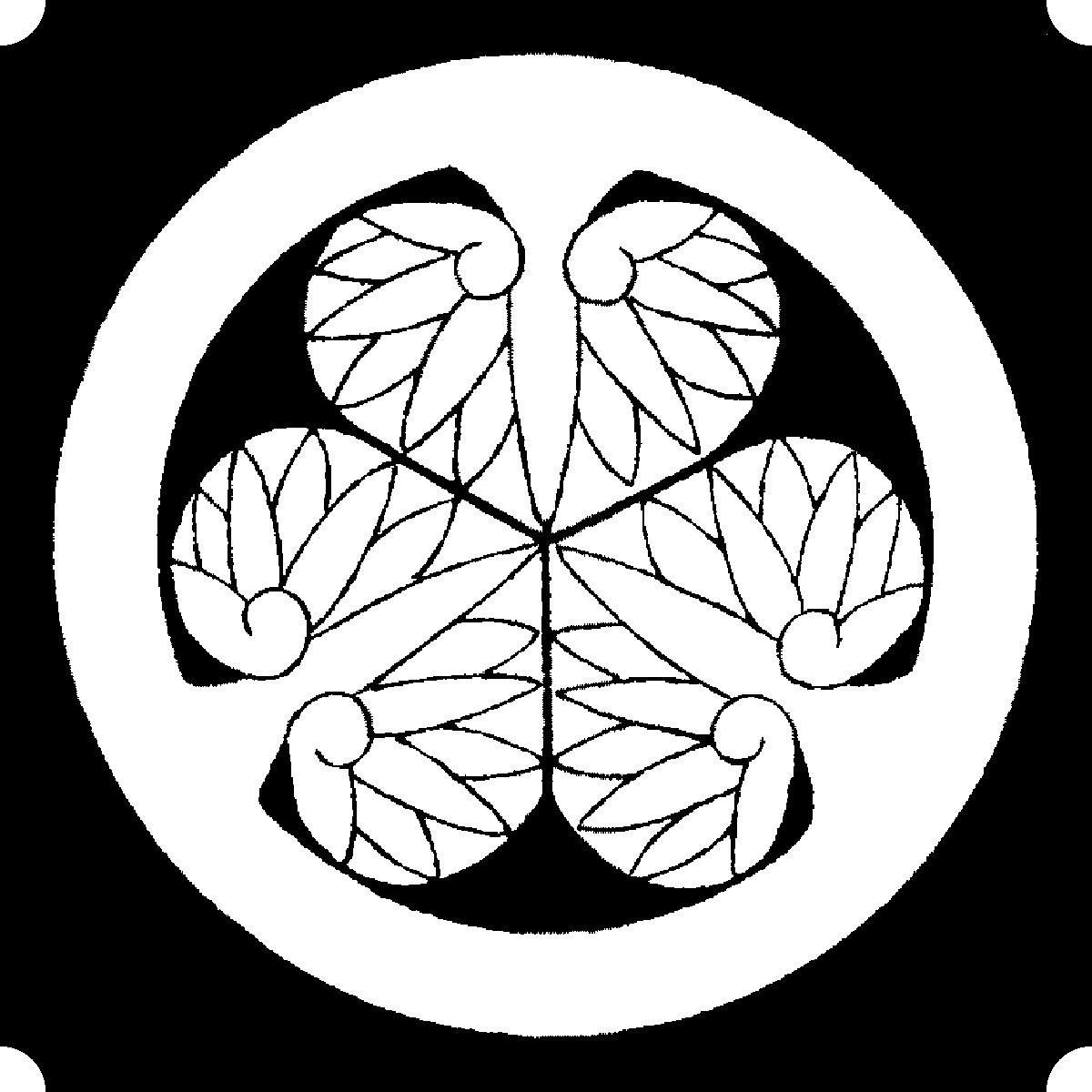

- Domain: Oshi
- Stipend: 100,000 koku
- Class: Fudai 4
- Headquarters: Oshi Castle
%20401x600.jpg)
Branch of the Okudaira family.
Senior branch, which in 1700, after the death of Tadahiro, resided at
Fukuyama (Bingo); in 1710 at Kuwana (Ise); and in 1823 at Oshi.
Succession
- Tokugawa Ieyasu (1542-1616)
- Okudaira Nobumasa
- Tadaakira/Tadaaki (1583-1644) - Daimyo of Kameyama (Ise -- 50,000 koku);
daimyo of Koriyama (Yamato -- 120,000 koku); 1st Matsudaira daimyo of Himeji
(Harima -- 180,000 koku)
- Tadaaki
- Tadahiro (1628-1700) - Daimyo of Yamagata (Dewa -- 150,000 koku), 1st
tenure; daimyo of Utsunomiya (Shimotsuke -- 150,000 koku); daimyo of
Shirakawa (Mutsu -- 150,000 koku); 1st Matsudaira daimyo of Yamagata (Dewa
-- 100,000 koku), 2nd tenure
- Tadamasa - 2nd Matsudaira daimyo of Yamagata; daimyo of Fukuyama (Bingo --
100,000 koku); 1st Matsudaira daimyo of Kuwana (Ise -- 100,000 koku)
- Tadatoki
- Tadahira
- Tadakatsu
- Tadatomo
- Tadasuke
- Tadaaki
- Tadataka - 1st Matsudaira daimyo of Oshi
- Tadasato
- Tadakuni
- Tadazane
- Tadanori
Notable Ancestors
-
Matsudaira
Tadaakira/Tadaaki (1583-1644)
.jpg)
Son of Nobumasa, was adopted by Ieyasu, whose grandson he was, and received
for himself and his posterity the name of Matsudaira. He resided successively:
in 1602 at Sakute (Mikawa): in 1610 at Kameyama (Ise -- 50,000 koku); in 1615
at Osaka (Settsu -- 100,000 koku); in 1619 at Koriyama (Yamato -- 120,000 koku);
in 1639 at Himeji (Harima -- 180,000 koku).
-
Matsudaira
Tadahiro (1628-1700)
In 1648 was transferred to Yamagata (Dewa -- 150,000 koku); in 1668 at
Utsunomiya (Shimotsuke); in 1681 at Shirakawa (Mutsu); in 1692 at Yamagata.
Related Branches
- Junior branch: Obata (Kozuke -- 20,000 koku)
Sources
Matsudaira (Matsui)


- Domain: Kawagoe
- Stipend: 80,000 koku
- Class: Fudai 5
- Headquarters: Kawagoe Castle (Hilltop)
.jpg)
.jpg)
Daimyo family descended from Minamoto Tameyoshi (1096-1156). Koreyoshi, son
of Tameyoshi, resided at Matsui (Yamashiro) and took the name of the place.
Succession
- Yasushige - Daimyo of Kasama (Hitachi -- 30,000 koku); daimyo of Sasayama
(Tanba -- 50,000 koku); 1st Matsudaira daimyo of Kishiwada (Izumi -- 50,000
koku)
- Yasuteru - 2nd Matsudaira daimyo of Kishiwada; daimyo of Yamazaki (Harima
-- 50,000 koku); 1st Matsudaira daimyo of Hamada (Iwami -- 50,000 koku)
- Yasunori
- Yasukazu
- Yasutoyo
- Yasuyoshi
- Yasutaka - 5th Matsudaira daimyo of Hamada; 1st Matsudaira daimyo of
Tanakura (Mutsu -- 60,400 koku)
- Yasukado
- Yasuhiro
- Yasuteru (daimyo 1866-1869) - 4th Matsudaira daimyo of Tanakura; 1st
Matsudaira daimyo of Kawagoe
- Yasutoshi (daimyo 1869- )
Notable Ancestors
-
Matsui
Yasuchika (1521-1583)
Served Ieyasu, who authorized him to take the name of Matsudaira. Took part
in the campaigns against the Imagawa, the Asakura, the Asai, the Takeda, and
received a revenue of 20,000 koku in Suruga.
-
Matsui
Yasushige (1568-1640)
Resided successively: in 1590 at Yorii (Musashi -- 20,000 koku); in 1601 at
Kasama (Hitachi -- 30,000 koku); in 1608 at Yamaki (Tanba -- 50,000 koku); in
1615 at Sasayama (Tanba); in 1619 at Kishiwada (Izumi -- 60,000 koku).
His descendants were transferred: in 1640 at Yamazaki (Harima); in 1649 at
Hamada (Iwami); in 1759 at Koga (Shimosa); in 1762 at Okazaki (Mikawa); in
1769 at Hamada (Iwami -- 70,000 koku); in 1836 at Tanakura (Mutsu -- 75,000 koku); and
finally in 1866 at Kawagoe.
Sources
Ooka
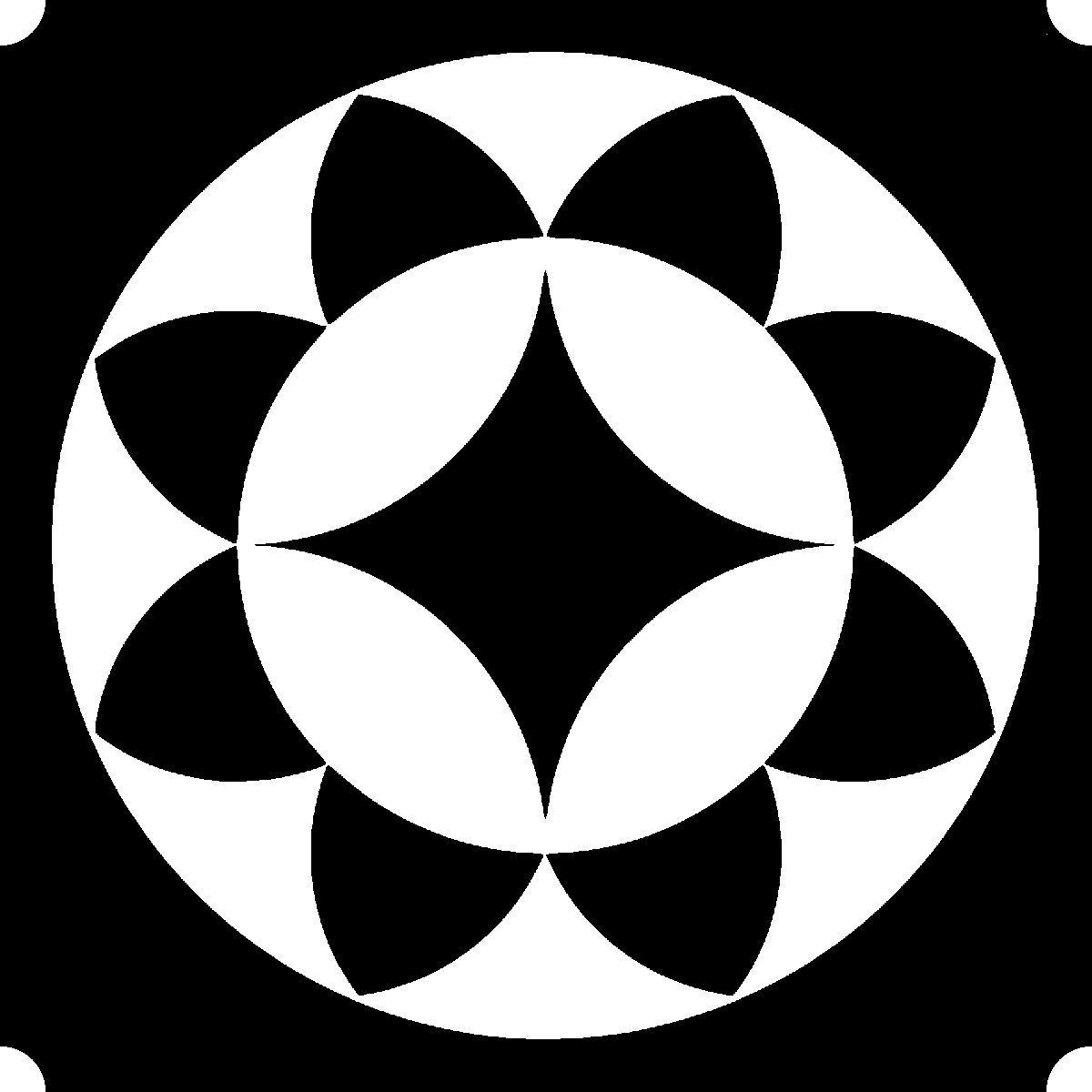

- Domain: Iwatsuki
- Stipend: 20,000 koku
- Class: Fudai 5
- Headquarters: Iwatsuki Castle (Flatland)
.jpg)
%20800x533.jpg)
Family of daimyo originating in Mikawa and descended from Fujiwara (Kujo)
Norizane (1210-1235).
Younger branch ennobled in 1751 in the person of Tadamitsu (1709-1760); from 1756
resided at Iwatsuki.
Succession
- Tadamasa
- Tadayoshi
- Tadafusa
- Tadanori
- Tadatoshi
- ...
- Tadamitsu (1709-1760) - 1st Ooka daimyo of Iwatsuki
- Tadayoshi
- Tadatoshi
- Tadayasu
- Tadamasa
- Tadakata
- Tadayuki
- Tadatsura
Related Branches
- Elder branch: Nishi-Ohira (Mikawa -- 10,000 koku)
Sources
Abe
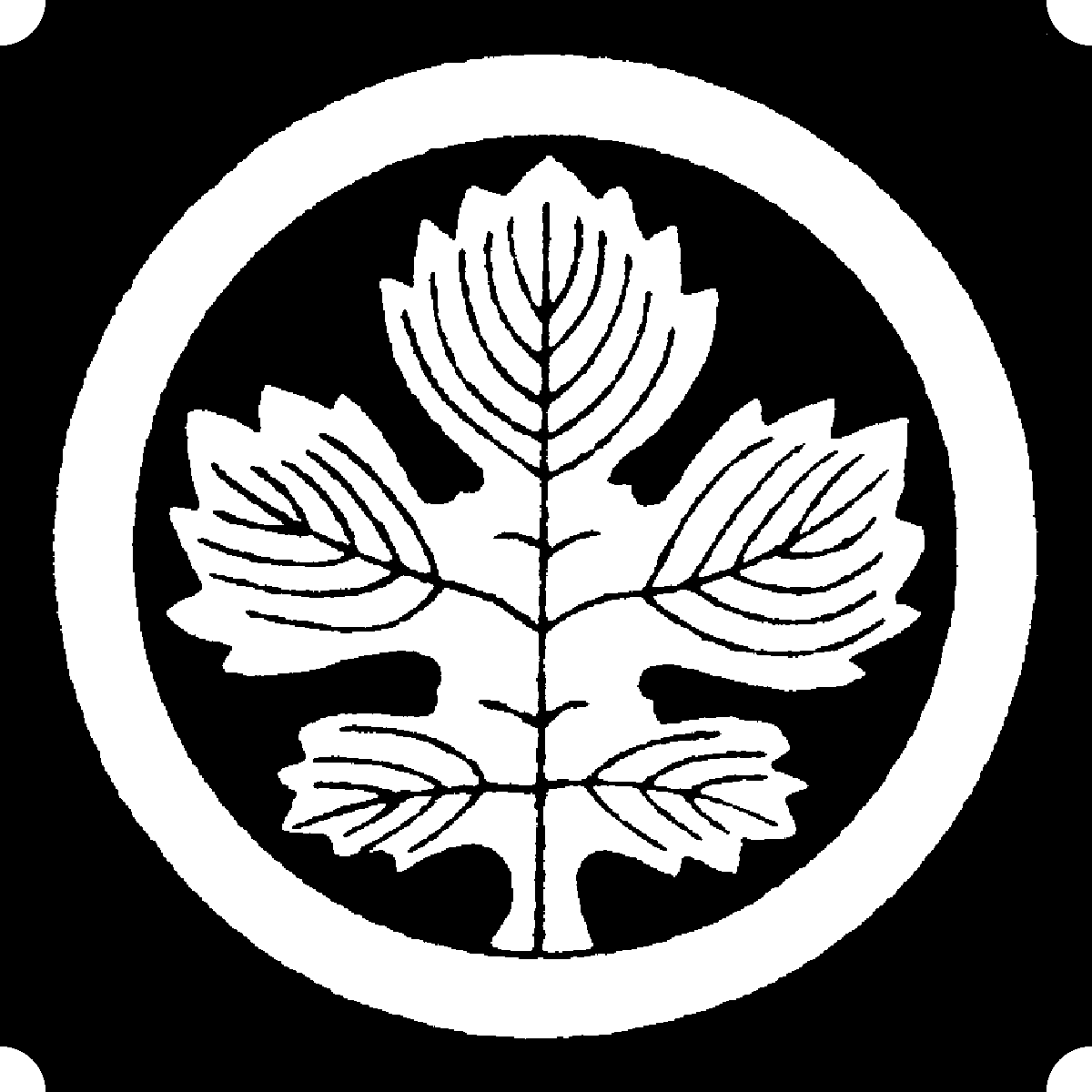
.gif)
- Domain: Okabe
- Stipend: 20,000 koku
- Class: Fudai 5
- Headquarters: Municipal office
Family of daimyo originating in Suruga and descended from the Shigeno
branch of the Seiwa--Genji. In 1636 established at Hambara (Mikawa); in 1751 they were
transferred to Okabe, where they remained.
Succession
- Nobumori
- Nobuyuki
- Nobutomo
- Nobumine
- Nobukata
- Nobuhira
- Nobuchika
- Nobumichi
- Nobumochi
- Nobuyori
- Nobuhisa (disgraced)
- Nobutaka
- Nobuoki
Sources
Yonekura
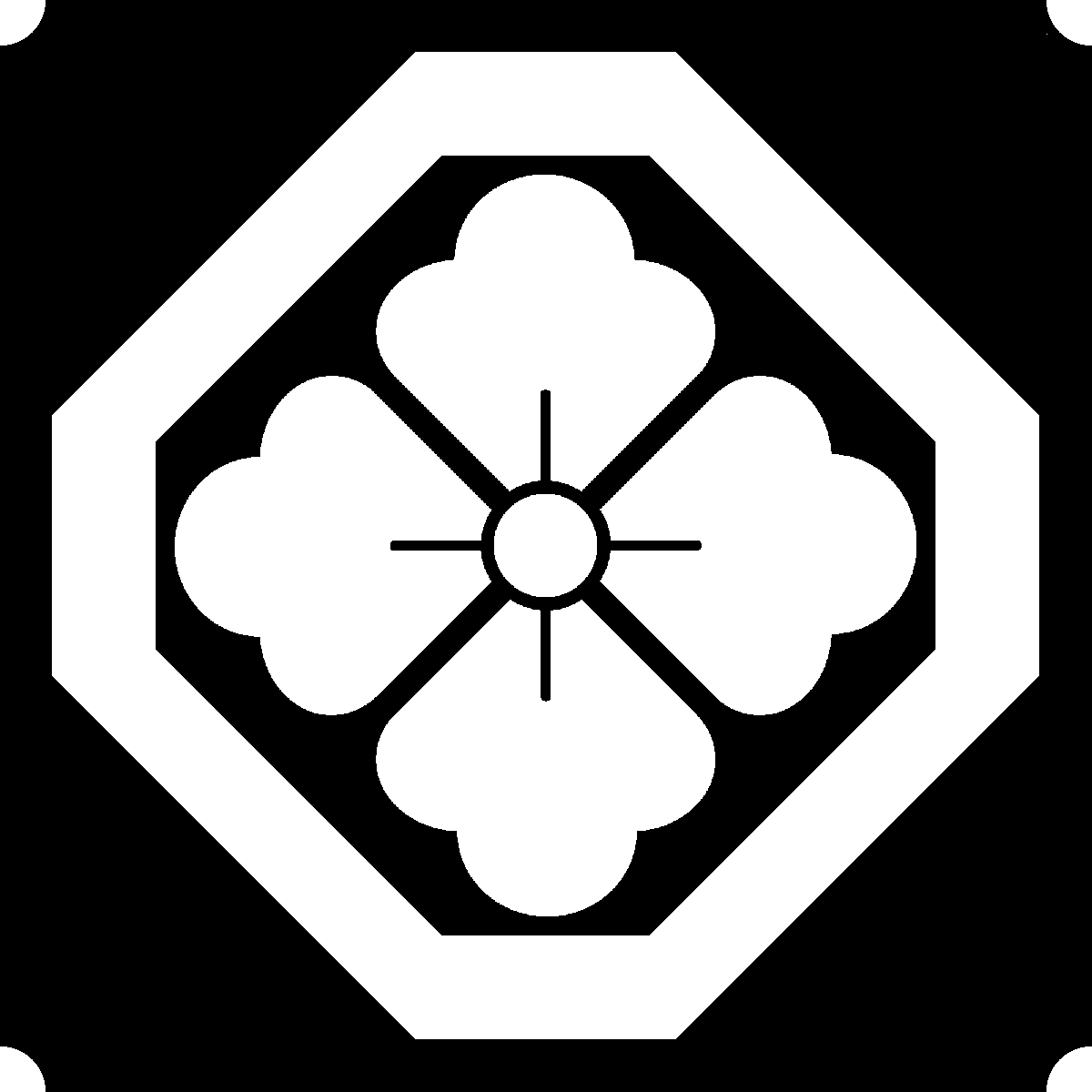

- Domain: Mutsuura (Kanazawa)
- Stipend: 12,000 koku
- Class: Fudai 5
- Headquarters: Municipal office
Daimyo family descended from Minamoto Yoshimitsu (Seiwa-Genji). In 1696
made noble, it resided at Kanazawa.
Succession
- Tadasuke
- Satonari (unranked)
- Masaharu
- Masakata
- Masayoshi
- Masanori
- Masanaka
- Masakoto
Sources
|
